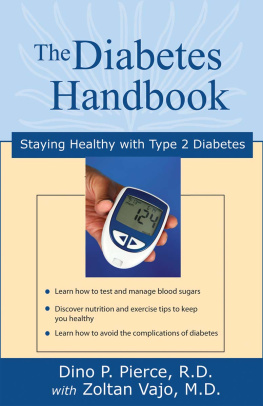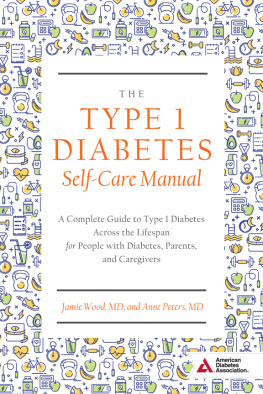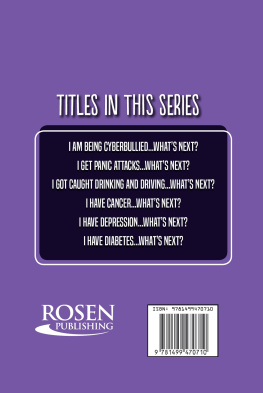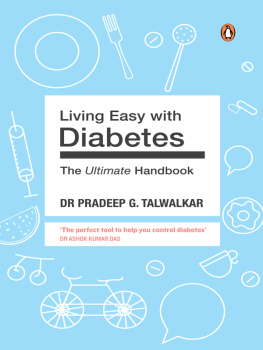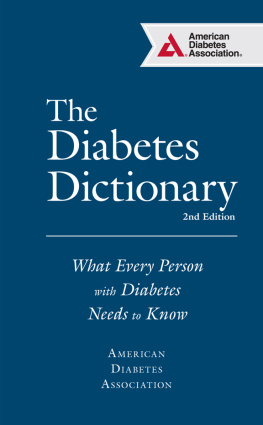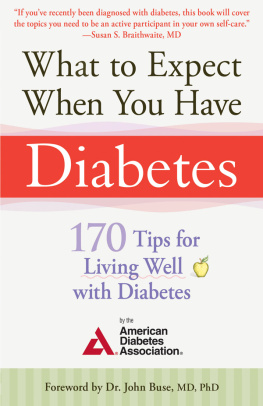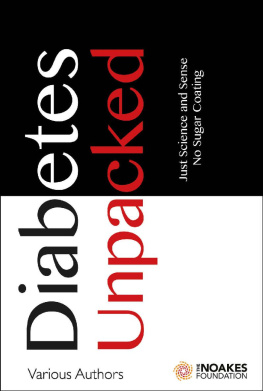Copyright 2006 by James S. Hirsch
ALL RIGHTS RESERVED
For information about permission to reproduce selections from this book, write to Permissions, Houghton Mifflin Harcourt Publishing Company, 215 Park Avenue South, New York, New York 10003.
www.hmhco.com
The Library of Congress has cataloged the print edition as follows:
Hirsch, James S.
Cheating destiny: living with diabetes, Americas biggest
epidemic / James S. Hirsch.
p. cm.
Includes bibliographical references and index.
ISBN : 978-0-618-51461-8
ISBN -10: 0-618-51461-9
1. DiabetesPopular works. I. Title.
RC 660.4. H 57 2006
616.462dc22 2006011239
e ISBN 978-0-547-52725-3
v1.0614
To Lynn Friedman and Irl Hirsch,
for looking after their younger brother.
To the Carter Center for Children,
for going beyond the call of duty.
Prologue
MY SON IS THIRSTY .
For most parents that sounds rather harmless, one of many needs that any three-year-old has. At first, Garretts request seems particularly innocuous. He has always preferred drinking milk or juice to eating. His constant running and playing would dehydrate any child, and he shows no sign of illness. But when he looks up at me and says, Daddy, Im thirsty, repeatedly over several days, I wonder if the damage has already been done.
Soon Garretts complaint becomes more urgent, and the water flows right through his small body, causing frequent trips to the bathroom. I try to break the cycle, telling him hes had enough to drink and hoping that his craving will go away. But still he drinks. He is potty trained, and he does all he can to hold the tidal wave of water coursing through him. On several occasions, he groans in his sleep to avert wetting his bed. I rush into his room, hustle him into the bathroom, and yank down his pajamas just in time. Splash! The urine rushes out like water from a fire hose. A couple of times the force is too great, and he pees in his bed.
Thats okay, buddy, I tell him. We just cant drink so much water at bedtime.
I am hoping for something, anything, whatever it takes to diminish his longing. But the water has become his lifeline. I watch him hold the glass in both hands, lift it carefully to his mouth, tilt it, and swallow again and again. I had once been thirsty like that. It was many years ago, but I remember it well.
In medical-speak, the word is polydipsiaabnormal thirst. Its an early symptom of diabetes: your body, suffering from elevated blood sugar, pees out the excess glucose and triggers the demand for more water. As the disease progresses, the body burns its own fat for energy, leading to a similar cycle of insatiable hunger followed by rapid weight loss. These are signs of type 1 diabetes, which is usually diagnosed in juveniles and treated with insulin.
I was diagnosed with type 1 at fifteen, and like every parent with diabetes, I scrutinize my kidswe also have a six-year-old daughter, Amandaevery day for symptoms, real or imagined. Hunger. Thirst. Fatigue. Weight loss. Emergency trips to the bathroom. Cuts that heal slowly. Crankiness. Unusual cravings. Any aberrant behavior could be a sign, however tenuous, of disorder in a childs finely tuned metabolic system. As a diabetic, I learned early on that the price of health is eternal vigilance, but as a parent, the price of devotion is chronic paranoia.
Garrett, at this stage, displays no other symptoms. He hasnt lost weight, increased his appetite, or complained of tiredness. On the contrary, he cannot look any better or behave any more vibrantly, a high-spirited little boy with tousled sandy hair and limpid brown eyes. His preschool teachers call him Smiley because hes always laughing. He loves sportsrunning, tackling, kicking a soccer balland is already hitting live pitching in our driveway. Hes strong-willeda nice way of saying hes stubborn. One night we heard a loud thump in his room. He had climbed out of his crib and crashed to the hardwood floor. We figured he had learned his lesson and put him back in the crib. Minutes later, thump! He had repeated his escape to the floor. At eighteen months, he was out of the crib. His pediatrician says that, pound for pound, hes the strongest patient she has.
But all the signs of health are now misleading. A nagging cold has slowed him down, and despite my coaxing, his desire for water continues to be strong. Events take an eerie turn one day in September 2004 when I interview Jeff Hitchcock in Boston for this book. Hitchcocks daughter, Marissa, was diagnosed with diabetes in 1989. Finding little medical information, he started a Web site about diabetic children from his home in Hamilton, Ohio. The site was so wildly successful250,000 hits per day from 149 countries and a raft of advertisersthat Hitchcock quit his engineering job and now organizes conferences and programs as well. He is revered by parents who feel neglected by health care professionals and find his site informative and comforting. When I meet Hitchcock, I understand his appeal. A lean man with graying hair, glasses, and a soothing demeanor, he speaks optimistically about the day that improved therapies will eliminate diabetic complications. But he also directs stinging criticism at the medical field. This combination of hope and frustration resonates with any diabetic. Asked what the success of his site reveals about diabetic care in America, he says, It stinks. And what should parents do if their child is receiving poor care? Fire the doctor, he says. That doesnt happen nearly enough.
but when I tell her that Im going to test Garretts blood sugar, shes surprised.
The glucose meter measures blood sugar in milligrams per deciliter. The normal fasting range is less than 100 mg/dl. Between 100 and 125 represents impaired glucose fasting, so 125 is the magic numberanything higher is a sign of diabetes. I take my lancet and quickly poke Garretts finger for a drop of blood. He is too groggy to complain or even notice. The blood comes out easily in a thick, gooey drop. The older meters took thirty seconds or even a minute to read the value, but the newer metersmine is a OneTouch Ultra from Lifescanhas a five-second countdown. I place the drop of blood on the test strip and prepare myself. But the whole thing is anticlimactic. I already know the result.
5-4-3-2-1.
The machine reads HI.
I have never seen such a reading and am momentarily confused. HI? Why the hell is the machine suddenly greeting me? No, no, no. Not HI as in HELLO, HI as in HIGH. As in: real HIGH. As in: your entire life has just changed. I curse Lifescan under my breath. With the millions of dollars it makes from diabetics, youd think it could afford to put two more letters on an elevated glucose reading instead of subjecting us to this incongruously cheerful, heartbreaking welcome.
Hes high, I tell Sheryl. I think well have to take him to the hospital.
She grabs Garrett and hugs him, and will soon dry her tears with the bloodstained tissue that I used to wipe his finger. I get him a water bottle and apologize for not letting him drink more. I have tried to deny his bodys downward spiral, to will it back to health by limiting his fluids. But my son is thirsty. Here, buddy, drink this, I say. Drink as much as you want.
I call my brother, Irl, whos had diabetes since he was a child and now, as an endocrinologist, runs a large diabetes clinic in Seattle for the University of Washington. He asks if Garrett has ketones, a fatty acid burned by the body of an uncontrolled diabetic that spills out in the urine. Almost 1,900 diabetics die each year from ketoacidosis, and a small child, once ketonic, can become fatally ill. A simple urine or home blood test can determine the presence of ketones. I tell my brother that I dont know yet, but I will keep him posted.
Next page




